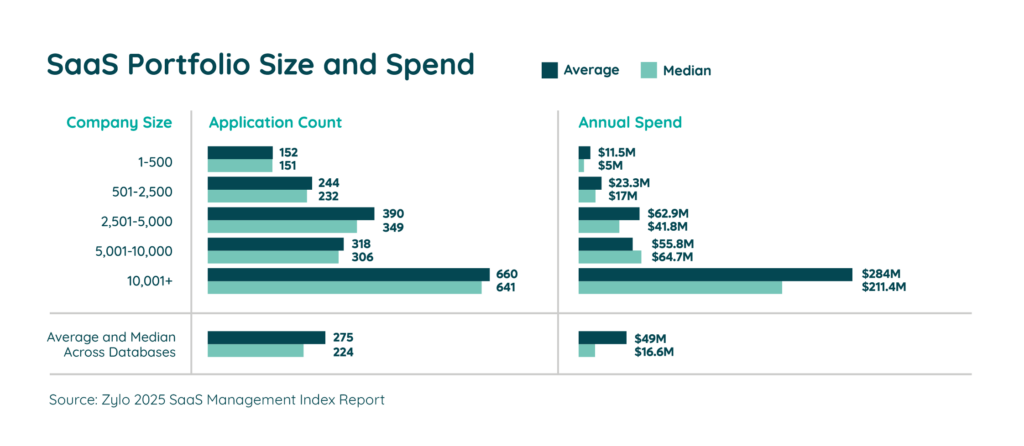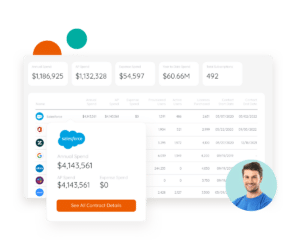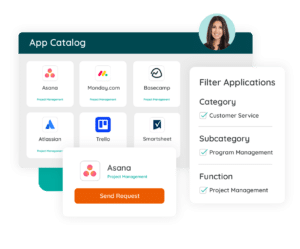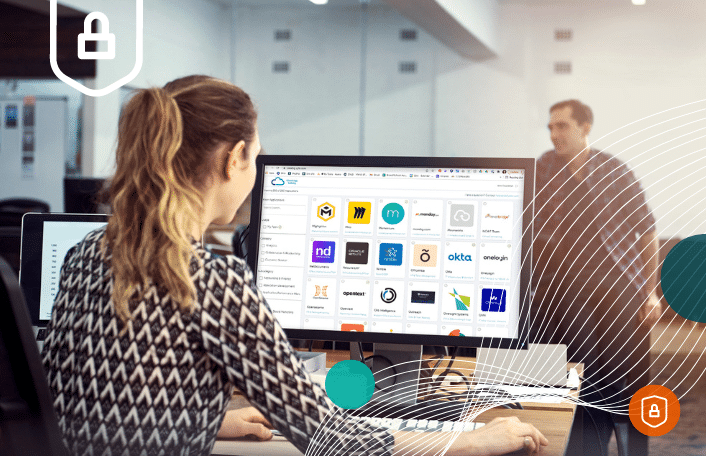Table of Contents
How many streaming apps do you have at home? Really. Be honest. We get it. There are compelling shows on everything from Netflix to Disney+ and niche services like FuboTV for sports. It’s easy to lose count of how many subscriptions you have.
The same goes for the Software as a Service (SaaS) used within your business. In fact, the average company has 275 apps. With that comes downstream effects. License waste runs rampant. Your bottom line incurs runaway SaaS costs. And collaboration across your business happens in siloes.

In a nutshell, your stack is rife with inefficiencies and waste. What you need is better SaaS governance.
Standardizing technologies is a fantastic place to start. Let’s explore the benefits of software standardization and how you can implement it at your organization.
What Is Technology Standardization?
Just so we’re on the same page, let’s define technology standardization. It is a component of SaaS governance where you establish a catalog of preferred software for your business. Typically, it’s part of a broader, business-led initiative to standardize business processes and data across a large, global enterprise.
Regardless of your organization’s size, standardizing your software can unlock huge savings and help your employees optimize their work. Also, we refer to technology standardization interchangeably with software standardization and application standardization. They’re one and the same.
Evolving Your SaaS Governance Framework for the Digital Workplace
Learn More5 Benefits of Software Standardization
The fact is reducing the complexity of your software environment has a direct impact on efficiency within your organization. There are five main benefits to software standardization:
- Reduces the administrative burden on IT. Software standardization allows IT to monitor and maintain systems and processes more effectively.
- Enhances security. If your applications are standardized, you know their security compliances, and it’s easier to stay up-to-date on and manage security risks.
- Improves the employee experience. Ensuring employees across teams and departments are on the same apps unlocks greater productivity and collaboration, while also giving IT more capacity to support users in your organization.
- Reduces costs. You’re eliminating waste, which in turn eliminates costs, helps you avoid them in the future, and drive more efficient spending.
- Prevents shadow IT. By normalizing technology, you can know exactly what apps are in your company’s stack. And which came in unapproved. Governance policies help ensure they don’t sneak back in.
How to Implement Application Standardization
So, you’re convinced of the importance of technology standardization. How do you make it a reality?
Step 1: Identify and Establish a Trusted SaaS Inventory
First, you need visibility of your SaaS stack. Standardization can’t happen unless you know all the applications in your portfolio. After all, you can’t govern or manage what you can’t see. Understand what apps you have and categorize them by functionality.
 Let’s look at how Adobe started the standardization process. At the onset of their SaaS management program, the team estimated they had about 1,800 titles. After onboarding a SaaS management tool, they discovered more than 2,600 titles.
Let’s look at how Adobe started the standardization process. At the onset of their SaaS management program, the team estimated they had about 1,800 titles. After onboarding a SaaS management tool, they discovered more than 2,600 titles.
“Visibility into our portfolio was table stakes for the success of our program,” said Vinod Vishwan, Sr. Director and Head of Business Planning and Operations at Adobe. “We could not begin to manage our software if we could not understand the full scope of it.”
Step 2: Develop a List of Standard Software Titles
Now that you have visibility, create a list of standard software titles. Partner with business units across your organization to identify the software you want to standardize for each category of applications.
When you’re building that list, here are a few things to consider. Keep them in mind as you determine what’s necessary for the business – and what’s not.
- Which apps are mission-critical to the business?
- Where could you consolidate?
- How do employees feel about the applications?
Step 3: Rationalize Your Portfolio
Now that you have your list, the next step in standardizing your technologies is to trim down your app count. We’re talking about killing off zombie apps, eliminating the right amount of redundant software, and consolidating duplicate contracts.
To date, the Adobe team has established more than 400 preferred standard titles. For instance, they:
- Consolidated seven sales platforms into one
- Decommissioned nine observability tools
- Eliminated 18 project portfolio management (PPM) tools
Through their software and license optimization efforts, Adobe unlocked $60M in cost savings and avoidance. Not to mention, they decelerated the overall growth of their software spend.
Adobe Drives Innovation and Massive Savings with Zylo
In the past 4 years, Adobe has rapidly scaled from $9B to $18B. This growth has made an already complex environment even more complex. Learn how they leveraged Zylo to get complete visibility into their SaaS portfolio, unlock millions in cost savings and avoidance and improve the employee experience.
Step 4: Establish an Enterprise App Store
Cleaning up your environment is already a huge improvement. But a key part of any good management strategy is future-proofing. You need to ensure your SaaS stack stays clean by implementing governance.
An enterprise app store—or an application catalog—ensures employees know what software is available and how to request access to the tools they need.
 For instance, Adobe offers employees a software catalog that allows them to browse all pre-approved software. If they need a tool that’s not currently available, they can make the case to purchase it through the appropriate procurement processes.
For instance, Adobe offers employees a software catalog that allows them to browse all pre-approved software. If they need a tool that’s not currently available, they can make the case to purchase it through the appropriate procurement processes.
Vishwan explained, “In addition to providing an excellent user experience, it significantly reduced sprawl over the past two years and created a unified procurement process across our enterprise.”
This type of governance strategy will keep your SaaS stack in tip-top shape for years to come.
Step 5: Implement a Change Management Strategy
Finally, you need a change management strategy. Change management is arguably the most critical element to successfully standardizing technologies – and the most difficult.
The last thing you want is to have key players across your business not understand your SaaS governance strategy – and bring your whole system crashing down. Develop a change management strategy for introducing employees to this new approach and getting them on board.
Communicate why you’re standardizing or have standardized your technologies. Explain the process clearly and ensure everyone across the business understands what’s going on, why you’re doing it, and their role in the process.
Also, don’t just say it and be done. Consistency and repetition are key to ensuring employees follow your governance policies and processes. And, let’s not forget to make sure it’s embedded into the onboarding of every new employee.
Free Yourself from the Burden of an Ungoverned SaaS Stack
Whether you’ve realized it or not, your ungoverned SaaS stack is detrimental to your company’s budget and efficiency. SaaS governance alleviates the burden, with standardization being a critical launchpad. It enables you to drive efficiencies across your stack and your business.
Look at Adobe again. Standardizing technologies helped the realize their goals:
- Eliminating software purchases on credit cards
- Establishing a methodical and reliable framework for SaaS governance
- Saving millions of dollars, freeing up budget for innovation
For insights on establishing a holistic SaaS governance strategy, read on here.

